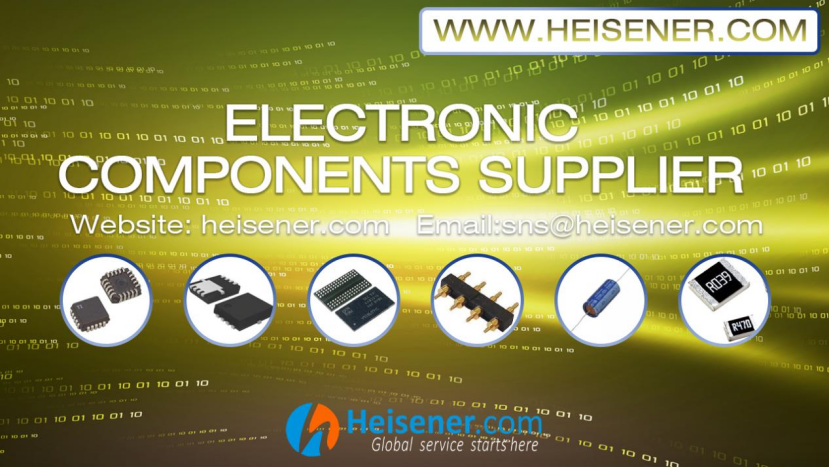The world is changing rapidly, and technological advancements are reaching new heights every day. The introduction of smart homes and factories has revolutionized the way we function in our daily lives. Electronic components play a critical role in the development of these systems. They provide an intelligent and sophisticated interface between humans and machines, making our work easier, more automated, and more efficient.
Smart homes and factories are becoming increasingly popular because they offer a wide range of benefits to users. In smart homes, electronic components help manage all the devices connected to a home network. These devices can effectively communicate with each other, making life more convenient and safer for its inhabitants. For example, sensors can detect when someone enters a room and automatically adjust lighting and temperature based on their preferences. This type of electronic parts are used to detect changes in physical conditions such as temperature, pressure, humidity, and light, and thus control the heating and cooling systems, the lighting systems, and the security systems. Sensors are also used in industries to monitor the functioning of machinery and discover flaws before they lead to breakdowns. This helps save downtime and saves the company money.

Except for the most-needed sensors, here are some other electronic components that are driving the growth of smart homes and factories:
1.Integrated Circuits
Another essential technological component for smart buildings, such as homes and industries, is the integrated circuits. They, often known as ICs, are very small chips that compress hundreds or even millions of electrical components into a single package. They are one of the most essential electronic components that could be found in a wide variety of smart devices, including security systems, lighting controls, and smart thermostats in smart homes and factories. These IC chips are utilized to carry out various tasks, including the processing of data, the amplification of signals, and the control of other machines.
2.RF/IF and RFID
RF/IF and RFID technology are typically used in a smart home or factory to allow for wireless communication between a selection of electronic equipment. RF/IF components are utilized in the process of receiving and transmitting radio frequency signals, whilst RFID components are utilized in the process of identifying and keeping track of items. These components are used extensively in the construction of wireless networks, which lets devices to communicate with one another in a smooth manner.
3.Microprocessors
Microprocessors are small electrical components that are used to conduct computations and run software programs. They are sometimes known as CPUs (central processing units). Smart home devices such as smart speakers, smart security cameras, smart locks and the like are all powered by these electronic parts. Microprocessors are also utilized in manufacturing facilities for the purpose of controlling automated assembly lines and machinery.
4.Capacitors & Resistors
Both capacitors and resistors are types of passive electronic components that are utilized in electronic circuitry for the purposes of storing electrical energy and regulating the flow of electrical current. When it comes to regulating the voltage and current in circuits, these components are absolutely necessary. This is especially true in smart homes and factories, where several devices are connected to the same circuit at the same time.
5.Switches & Relays
By opening or shutting a circuit, switches and relays are two types of devices that can be used to control the flow of electricity through a circuit. In a smart house or factory, these components are what are used to power on or power down the various devices. In addition to switches, relays are often used to operate things like lights, fans, and other electrical appliances.
6.Connectors
Connectors are the means through which several components of a circuit are joined together to form an integrated whole. These components are necessary for enabling data transfer and power transmission between various devices in a smart home or factory. Connectors are essential for connecting various devices, including sensors, controllers, and others.
7.Circuit Protection
Components of circuit protection are utilized to shield electronic devices and circuits from experiencing damage as a result of an excessive amount of voltage or current. These components are vital for guaranteeing the safety and longevity of smart devices. They can also be used in other similar settings.
8.More Electronic Components
Some examples of electronic components used to control and modify electrical signals in circuits include potentiometers, inductors, coils, chokes, transformers, magnetics, and isolators. These electronic parts are placed in a circuit to remove interference and unwelcome signals. These parts are important in connected environments like smart homes and factories, where several devices share a same circuit and must work together without interference.
Other electronic components that can be found in smart homes and industries include crystals, oscillators, resonators, interconnects, transducers, optoelectronics, and power supply. These components are utilized for controlling frequency, transferring data, and managing power respectively.
In conclusion, electronic components have completely changed how industries and smart homes operate. They enable a lifestyle that is more effective, automated, and convenient and provide people with more control over their environment. Electronic components also result in more efficient procedures that improve productivity and decrease errors, having a significant impact on the manufacturing industry. We can only anticipate further advances in electronic components as technology develops, giving us more control and automation while also making life easier and more productive than before.
About the Author
This article was written by Heisener, an industry-leading electronic components supplier in semiconductor industry. They commit to delivering most-needed, obsolete, franchised, and hard-to-find parts to clients worldwide.
Media Contact
Name: Elsie Deng
Email: sns@heisener.com